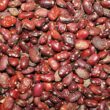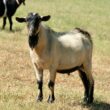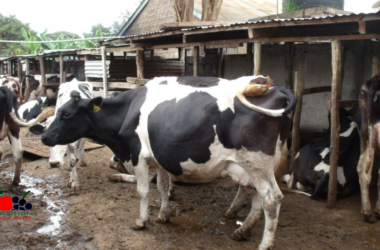Why Goat Farming Could Be Your Next Smart Move
Thinking about diving into livestock farming but not sure where to start? Goat farming in Kenya might just be the perfect entry point you’re looking for. It’s not just about raising a few animals in your backyard—it’s a legitimate business opportunity that’s transforming rural economies and creating sustainable income streams for thousands of Kenyans.
From traditional herding to sophisticated dairy operations, goat farming has evolved dramatically over the past decade. Modern Kenyan goat farmers are now producing quality meat and milk that commands premium prices in both local and export markets. The best part? You don’t need massive capital or extensive farmland to get started.
This guide cuts through the noise to give you a clear roadmap for launching and scaling a profitable goat farming venture in Kenya. Whether you’re eyeing dairy production, meat goats, or a hybrid model, I’ve got you covered with practical, no-fluff advice that gets straight to the point.
Understanding the Goat Farming Landscape in Kenya
Current Status and Economic Impact
Goat farming isn’t just a side hustle in Kenya—it’s big business. The sector has transformed from traditional practices to commercialized systems with substantial economic footprint. Recent data shows dairy goat enterprises contribute approximately 15.2% to total livestock income and 4.8% to overall household income for smallholder farmers.
The numbers tell a compelling story: According to the Kenya National Bureau of Statistics, the production value of sheep, goats, and lambs reached 6,782.400 million Kenyan Shillings (KES) in 2017, up from 5,767.400 million KES in 2016. That’s serious growth from the 2001 figure of just 1,457.350 million KES, with the sector hitting an all-time high of 10,025.000 million KES in 2012.
Translation? There’s money to be made here.
Types of Goat Farming Systems in Kenya
Before you jump in, understand the three main goat farming systems in Kenya:
- Traditional/Extensive Systems: Low-input, low-output approach where goats graze freely on communal land. Minimal investment, but limited returns.
- Semi-Intensive Systems: Combines some free-range grazing with supplementary feeding. Moderate investment and better returns than traditional systems.
- Intensive Systems: High-input, high-output approach with controlled feeding, housing, and breeding. Requires significant investment but delivers premium returns.
As a beginner, starting with a semi-intensive system gives you the best balance between investment requirements and potential returns.
Getting Started: Your First Steps into Goat Farming
Selecting the Right Goat Breeds for Your Goals
Your success begins with choosing the right breeds for your specific goals. Kenya offers excellent options for both dairy and meat production:
Top Dairy Goat Breeds in Kenya:
- Toggenburg: Excellent milk producers (2+ liters daily when well-managed)
- Alpine: Adaptable to various climates with good milk yields
- Saanen: Highest milk producers but require excellent management
- Anglo-Nubian: Dual-purpose breed with high butterfat content in milk
Top Meat Goat Breeds in Kenya:
- Boer: Rapid growth rates and excellent carcass quality
- Galla: Indigenous breed with good drought resistance
- Small East African: Hardy local breed that tolerates harsh conditions
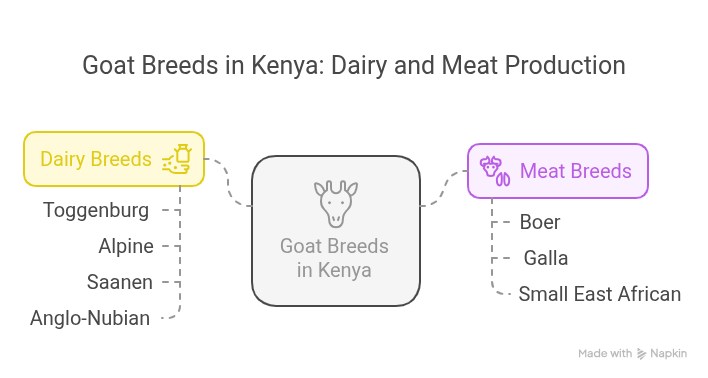
For beginners, crossbreds between exotic and indigenous breeds often provide the perfect balance between productivity and hardiness. The upgrading of local breeds through crossbreeding has been a common and successful approach in Kenya.
Essential Infrastructure and Setup Costs
Here’s what you’ll need to get started:
Housing Requirements:
- Well-ventilated, raised wooden or concrete floor
- Minimum space: 1.5 m² per adult goat
- Separate areas for kidding, sick animals, and bucks
- Proper drainage system
Basic Equipment:
- Feeding troughs (raised to prevent contamination)
- Water containers (clean, fresh water access)
- Milking equipment (for dairy goats)
- Basic veterinary kit
Startup Costs Breakdown:
- Housing construction: KSh 50,000-150,000 (depends on size/materials)
- Initial stock (5 does + 1 buck): KSh 60,000-120,000
- Equipment: KSh 15,000-30,000
- Feed reserves: KSh 20,000-40,000
- Veterinary supplies: KSh 5,000-10,000
Total startup range: KSh 150,000-350,000 depending on scale and quality
This might seem significant, but remember—you can start small and scale up gradually as you gain experience and reinvest profits.
Breeding Strategies for Maximum Productivity
Smart Breeding Practices for Kenyan Conditions
Effective breeding is where the real money in goat farming comes from. Experts recommend limiting crossbreeding to the second or third generation when using exotic breeds to maintain adaptability to local conditions.
A few smart breeding practices that work well in Kenya:
- Buck rotation: Using different bucks to prevent inbreeding
- Controlled breeding: Managing breeding seasons to align kidding with market demands
- Selection criteria: Choosing breeding stock based on growth rate, milk production, and disease resistance
Leveraging Modern Breeding Technologies
The game-changer in Kenya’s goat breeding landscape is artificial insemination (AI). In 2025, the Kenya Animal Genetic Resources Centre (KAGRC) initiated efforts to transform dairy and meat production through goat AI programs.
This technology gives you access to superior genetics without the cost of purchasing and maintaining expensive breeding bucks. For beginners, attending KAGRC knowledge-sharing events provides essential information about these technologies.
Feeding Management: The Key to Profitability
Nutrition Requirements for Different Production Phases
One surprising insight from research in Kenya: goats in semi-arid regions have occasionally outperformed those in high-potential areas due to better feeding practices. This proves that environmental potential alone doesn’t determine productivity—your management decisions do.
Different production phases require different feeding approaches:
Feeding by Production Phase:
| Production Phase | Forage Requirements | Concentrate Needs | Mineral Supplementation |
|---|---|---|---|
| Dry Does | 2-3% of body weight in dry matter | Minimal (0.2-0.5kg/day) | Regular salt lick access |
| Pregnant Does | 3-4% of body weight in dry matter | Increasing (0.5-1kg/day) | Enhanced calcium and phosphorus |
| Lactating Does | 4-5% of body weight in dry matter | High (1-2kg/day based on milk output) | Complete mineral mix daily |
| Growing Kids | High-quality forage ad lib | 0.25-0.5kg/day | Growth-focused mineral mix |
Cost-Effective Feeding Strategies
Smart feeding doesn’t mean expensive feeding. Here are practical approaches that work for Kenyan farmers:
- Fodder cultivation: Grow napier grass, desmodium, or calliandra on farm boundaries
- Silage making: Preserve excess fodder during rainy seasons for use during dry periods
- Kitchen waste utilization: Supplement with appropriate kitchen scraps
- Group purchasing: Join farmer associations to access expensive supplement feeds at lower bulk prices
Research in Nyeri County showed that approximately 43% of farmers in semi-arid Kieni East provided concentrates during milking, and 48% supplemented feed with minerals—contributing to their higher milk yields despite less favorable natural conditions.
Health Management and Disease Prevention
Common Goat Diseases in Kenya and Their Prevention
Disease outbreaks remain one of the biggest challenges in Kenyan goat farming. Here’s your quick-reference guide to the most common threats:
Respiratory Conditions:
- Pneumonia: Ensure proper ventilation but avoid drafts
- CCPP (Contagious Caprine Pleuropneumonia): Vaccination and quarantine new animals
Parasitic Infections:
- Internal parasites: Regular deworming every 3-4 months
- External parasites: Dipping/spraying and clean housing
Other Critical Conditions:
- Mastitis: Clean milking practices and regular udder checks
- Foot rot: Keep housing dry and trim hooves regularly
- Enterotoxemia: Vaccination and avoiding sudden feed changes
Establishing a Practical Health Management Calendar
Prevention is cheaper than treatment. Create a year-round health management schedule:
Monthly Tasks:
- Physical examination of all animals
- Hoof inspection and trimming as needed
- Housing cleanliness assessment
Quarterly Tasks:
- Deworming (adjust frequency based on local conditions)
- Vaccination boosters as recommended
- Professional veterinary check-up
Annual Tasks:
- Comprehensive herd health evaluation
- Breeding soundness examination for bucks
- Review and update of health management protocol
Marketing and Business Development
Understanding the Goat Products Market in Kenya
The goat market in Kenya is diverse, with multiple potential revenue streams:
Dairy Products:
- Fresh milk (current market price: KSh 100-200 per liter)
- Yogurt and cheese (value-added products with 30-50% markup)
Meat Products:
- Live goats (KSh 5,000-15,000 depending on breed, age, and weight)
- Processed meat (potential for premium pricing with proper handling)
Other Revenue Streams:
- Breeding stock (premium prices for quality animals)
- Manure (organic farming market)
- Training/farm visits (agri-tourism potential)

Building Profitable Market Connections
Success in goat farming isn’t just about production—it’s about smart marketing:
- Join farmer associations: Organizations like the Dairy Goat Association of Kenya (DGAK) with approximately 16,000 farmer members provide valuable connections and market access.
- Explore value addition: Simple processing like packaging milk in branded containers can increase margins by 20-30%.
- Develop direct customer relationships: Supply restaurants, hotels, or health-conscious consumers directly to eliminate middlemen.
- Leverage digital marketing: Even small-scale farmers can use WhatsApp business accounts to connect with buyers.
- Certification and standards: Comply with Kenya Dairy Board requirements to access premium markets.
Research indicates that factors contributing to economic success include location, good management practices, and farmers’ awareness of market demands. Understanding and responding to market requirements is crucial for establishing effective production goals.
Scaling Your Goat Farming Enterprise
From Beginner to Commercial Producer
Ready to grow? Here’s a practical scaling roadmap:
Year 1: Foundation Phase
- Master basic management with 5-10 goats
- Focus on learning rather than profits
- Establish basic record-keeping systems
Years 2-3: Refinement Phase
- Expand to 15-30 goats based on initial success
- Implement selective breeding for herd improvement
- Develop consistent market channels
Years 4-5: Commercial Phase
- Scale to 50+ goats with proven management systems
- Invest in labor-saving infrastructure
- Consider vertical integration (processing your own products)
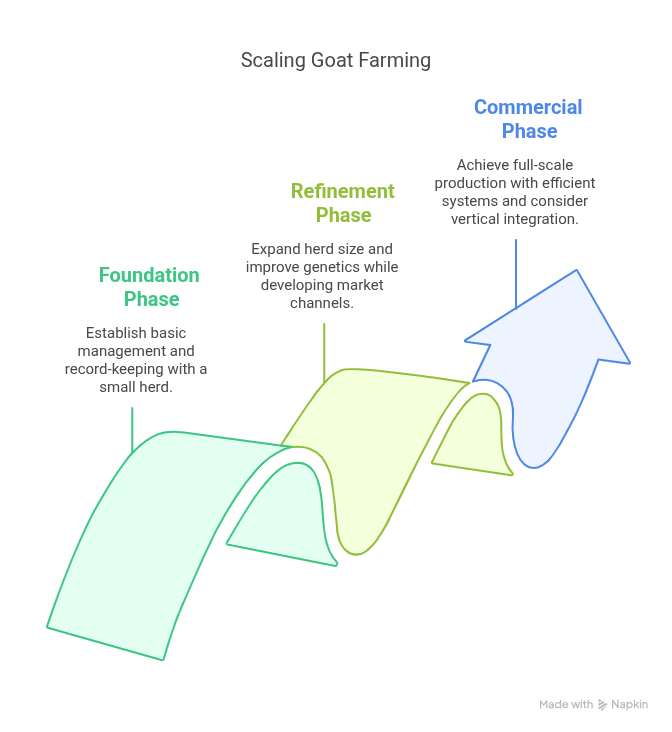
Record Keeping and Financial Management
You can’t improve what you don’t measure. Implement these record-keeping practices:
Essential Records:
- Individual goat performance cards
- Breeding and kidding histories
- Milk production logs (daily for dairy operations)
- Health interventions and outcomes
- Income and expense tracking
Key Performance Indicators to Track:
- Kidding rate (kids born per doe per year)
- Growth rates (weight gain per day)
- Feed conversion efficiency
- Milk yield per lactation
- Cost per liter of milk or kg of meat produced
Navigating Challenges in Kenyan Goat Farming
Addressing Common Obstacles for New Farmers
Let’s be real—goat farming isn’t without challenges. Here are the major hurdles you’ll face and how to overcome them:
Land Constraints:
- Rapid population growth and shrinking land sizes affect many farmers
- Solution: Intensive zero-grazing systems require minimal space
Disease Management:
- Uncontrolled outbreaks lead to significant losses
- Solution: Strict biosecurity, vaccinations, and rapid response protocols
Genetic Limitations:
- Limited access to quality breeding stock
- Solution: Artificial insemination and community breeding programs
Market Access:
- Cartels in the industry and high transportation costs
- Solution: Form marketing cooperatives with other farmers
Leveraging Support Systems and Resources
You don’t have to go it alone. Kenya offers several support systems for goat farmers:
Government Resources:
- County agricultural extension officers
- Subsidized AI services through KAGRC
- Agricultural finance programs
Non-Governmental Support:
- Organizations like FARMAfrica implementing community-based improvement projects
- Training programs through agricultural colleges
Farmer Networks:
- Join existing associations like the DGAK
- Participate in farmer field schools and demonstration farms
Conclusion: Your Next Steps to Goat Farming Success
Starting a goat farming business in Kenya isn’t just about buying a few animals and hoping for the best. It requires planning, ongoing education, and consistent implementation of best practices. But with the right approach, it offers a legitimate pathway to sustainable income and financial independence.
Begin by deciding on your production focus (dairy, meat, or dual-purpose), then select appropriate breeds and establish proper housing. Start small, master the basics, and scale gradually as you gain confidence and experience.
Most importantly, connect with other farmers. The success of initiatives like the FARMAfrica Meru project, which expanded from serving 10 farmer groups to more than 160 groups within a decade, demonstrates the power of collective learning and support.
Ready to get started? Your goat farming journey begins now.
What aspects of goat farming in Kenya are you most interested in? Drop a comment below with your questions, and I’ll do my best to answer them in upcoming posts.





